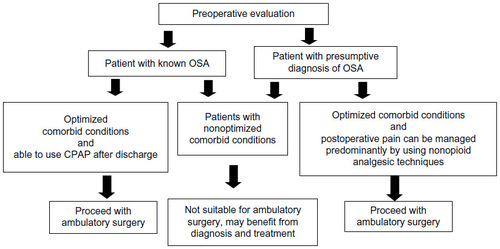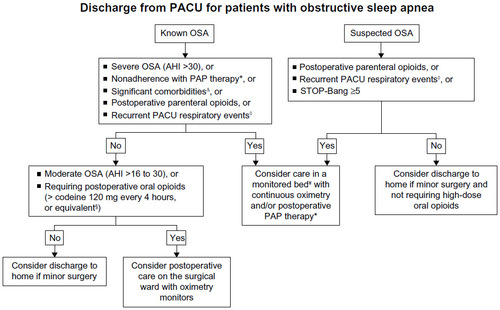Notes: Postoperative PACU discharge timing and location for the patient with known or suspected OSA after general anesthesia. Such patients should be monitored for >60 minutes after usual PACU criteria are met. *Positive airway pressure (PAP) therapy, including continuous PAP, bilevel PAP, or automatically adjusting PAP;
Δsignificant comorbidities (eg, heart failure, arrhythmias, uncontrolled hypertension, cerebrovascular disease, metabolic syndrome, BMI >35 kg/m
2);
◊recurrent postanesthesia care unit (PACU) respiratory event: repeated occurrence of oxygen saturation <90 percent, or bradypnea <8 breaths/min, or apnea ≥10 seconds, or pain sedation mismatch (high pain and sedation scores concurrently);
Citation75 §equianalgesic doses of oral opioids: codeine 120 mg every 4 hours, oxycodone 10 mg every 4 hours, hydromorphone 4 mg every 4 hours;
¥monitored bed: environment with continuous oximetry and the possibility of early medical intervention (eg, intensive care unit, step-down unit, or remote pulse oximetry with telemetry in surgical ward). Adapted from: Seet E, Chung F. Management of sleep apnea in adults – functional algorithms for the perioperative period: Continuing Professional Development. Can J Anaesth. 2010; 57:849.
Citation32Abbreviations: PACU, postanesthesia care unit; OSA, obstructive sleep apnea; AHI, apnea-hypopnea index; PAP, positive airway pressure.


